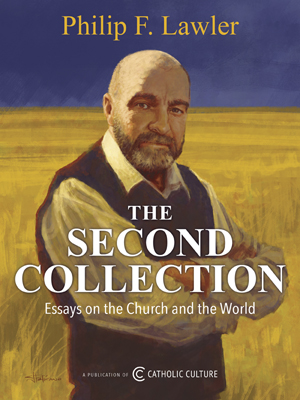Make your gift today!
Help keep Catholics around the world educated and informed.
Already donated? Log in to stop seeing these donation pop-ups.
Catholic Activity: Mexican Sign of the Cross
Here is an explanation on the Mexican persignarse and santiguarse. These are the blessing and the sign of cross that one makes before prayer, passing a church, etc.
DIRECTIONS
The Mexican child may be only a few days old when the mother takes its little hand and makes it go through the movements on the forehead, on the mouth, and on the breast, required to perform the persignarse. The mother forms the child's forefinger and thumb into a cross for this ceremony; she is very careful that the child do the act correctly. With thumb and forefinger crossed the hand touches the forehead making the four points of the cross there; the same is done on the mouth and on the breast.
The words which are said are these: "Por la senal de la Santa Cruz, de nuestros enemigos libranos Senor Dios Nuestro." It means, "By the sign of the Holy Cross deliver us, Lord, from our enemies."
At this point the regular sign of the Cross is made. The two "signatures" are differentiated by the terminology used. The first is called the persignarse; the second, santiguarse. The first means, signing yourself; the second, blessing yourself.
These two signs of the cross are used together, the one following the other. At the conclusion with thumb and forefinger still forming a cross the child is taught to put his hand to his lips and kiss the cross thus formed. The custom is habitual with all our people of Mexican extraction in the southwest. No Mexican would enter a church, or even pass it by, without the persignarse and santiguarse.
Activity Source: Your Home, A Church in Miniature by Compiled by The Family Life Bureau in the early 1950s, The Neumann Press, Long Prairie, Minnesota, 1994






